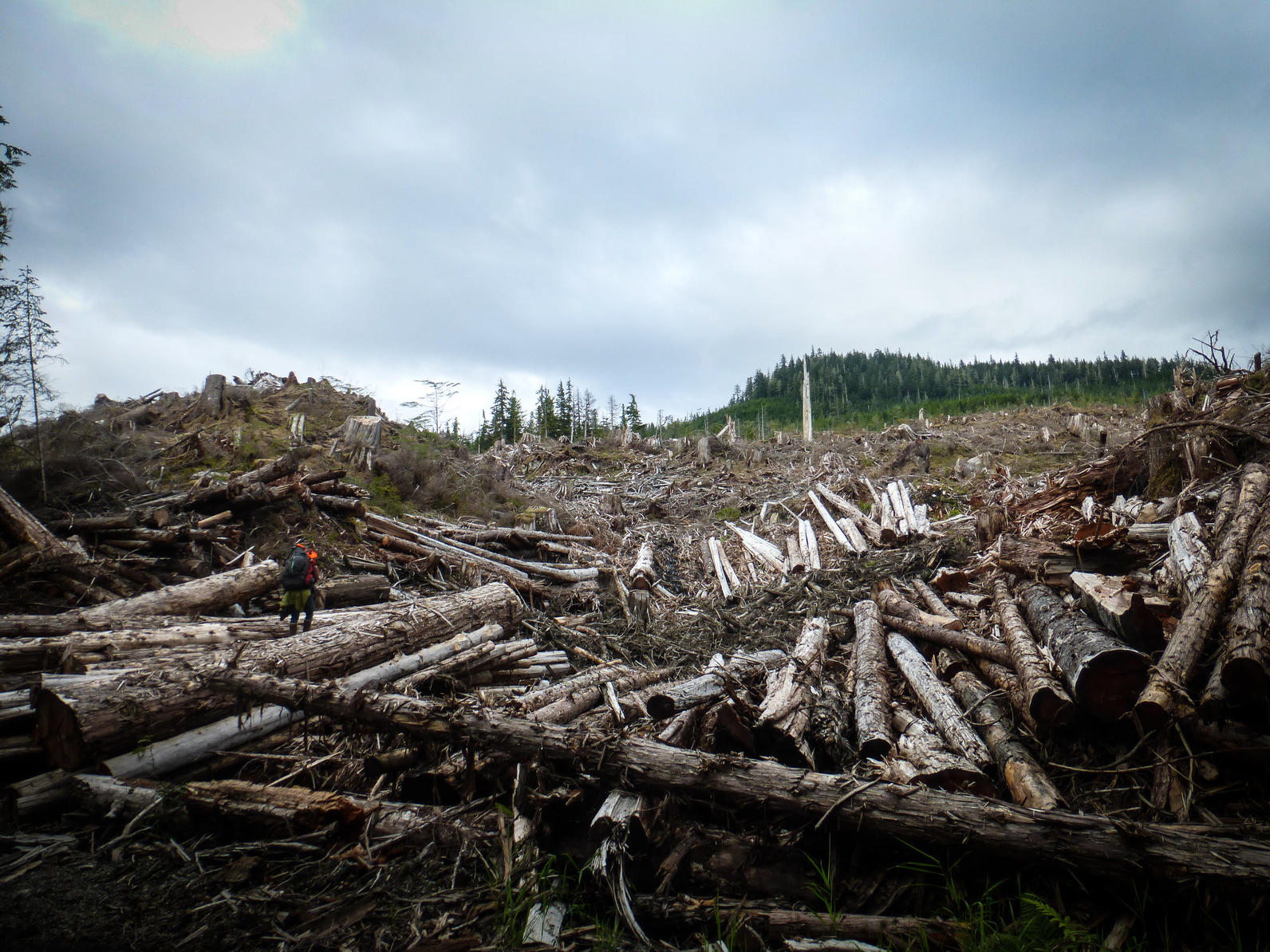
Juneau, AK (May 7, 2019)—National Audubon Society joined seven other conservation groups today in suing the U.S. Forest Service to stop its authorization of the largest logging project in the national forest system in a generation, including thousands of acres of old-growth timber in the Tongass National Forest.
Today’s lawsuit says the Forest Service is violating the National Environmental Policy Act and failing to comply with the agency’s own management plan for the Tongass. The massive old-growth and second-growth logging project in America’s largest and wildest national forest will harm habitat and wildlife, hurt the region’s growing tourism industry and reduce people’s outdoor recreational opportunities.
The Forest Service has approved 67 square miles of logging on Prince of Wales Island to be accessed by 164 miles of new roads over a period of 15 years. Though the agency has not yet determined the specific locations of any of this activity, the forest supervisor signed off on the final environmental review for the project in March. Without specific details of the project, the Forest Service cannot adequately assess its impact — and the public cannot meaningfully weigh in as federal law demands.
“The uninformed approach by the Forest Service — approving this mammoth sale before even figuring out the details — is blatantly unlawful,” said Earthjustice attorney Tom Waldo. “This throwback to an old way of doing business is unacceptable and contrary to decades of court decisions.”
Prince of Wales Island, the fourth largest island in the United States, is prized by residents and visitors alike for hunting, fishing, recreation, and tourism. The sale includes the logging of up to 23,000 acres of old growth national forest.
“This sale is the Forest Service’s end-game for Prince of Wales Island to complete, in combination with major forestland owners, the utter decimation of the island’s forests that it started in the pulp mill era,” said Larry Edwards, president of Alaska Rainforest Defenders and a Tongass activist of 40 years.
The industrial-scale clearcutting of increasingly rare old-growth forest could endanger many species, including several found only on Prince of Wales Island, such as a unique subspecies of flying squirrels. The island is also home to a dwindling population of Alexander Archipelago wolves, which rely on the Tongass for their survival.
“The Prince of Wales Landscape Level Analysis and the condition-based NEPA process are a massive timber sale in the guise of a collaborative ‘multi-use’ project,” said Meredith Trainor, Executive Director of the Southeast Alaska Conservation Council. “The project funds only six of the 27 proposed watershed improvement and restoration projects in fiscal year 2019. In contrast, field studies that will result in 50 million board feet of old-growth timber being put up for sale by September 2019 are all fully funded. The reality is that this will be the largest old-growth timber sale on the Tongass in nearly 30 years, on an island where local residents will tell you that they have already lost too much old-growth habitat to logging.”
“This massive project would wipe out critical habitat for the rare Alexander Archipelago wolf and harm the streams and rivers Alaska’s salmon depend upon,” said Randi Spivak, public lands director at the Center for Biological Diversity. “Alaskans love the Tongass, and they want this destructive logging to stop. The Forest Service and Alaska’s congressional delegation are doing the bidding of the timber industry.”
If the true impact of this sale were examined and subject to a cost-benefit analysis, it would be exposed as a wasteful, destructive giveaway to a logging industry that supports less than 1 percent of the region’s economy.
“This sale will have devastating results for birds, including endemic species like the Queen Charlotte Goshawk who finds nesting sites in the safety of these old-growth forest stands,” said Natalie Dawson, executive director at Audubon Alaska. “The Tongass is the only national forest still implementing a logging program based on clearcutting old-growth. It is an unnecessary practice that undermines the true values of these forests for Alaskans and all Americans.”
“Tongass National Forest is the crown jewel of our nation's forest system and it's no place for logging,” said Alli Harvey, Alaska representative for Sierra Club’s Our Wild America campaign. “An accurate environmental review would have made it clear that this sale would be a threat to Alaska's extraordinary environment and our tourism and recreation economy and should never take place.”
Earthjustice is representing Southeast Alaska Conservation Council, Alaska Rainforest Defenders, Defenders of Wildlife, Sierra Club, Alaska Wilderness League, Natural Resources Defense Council, National Audubon Society, and the Center for Biological Diversity in this lawsuit.
CONTACTS
Rebecca Sentner | Audubon Alaska | (907) 276-7034 | rsentner@audubon.org
Tom Waldo | Earthjustice | (907) 500‐7123 | twaldo@earthjustice.org
Gabby Brown | Sierra Club | (914) 261-4626 | gabby.brown@sierraclub.org
Randi Spivak | Center for Biological Diversity | (310) 779-4894 | rspivak@biologicaldiversity.org
Larry Edwards | Alaska Rainforest Defenders | (907) 752-7557 | Larry@LTEdwards.com
Dan Cannon | Southeast Alaska Conservation Council | (907) 586-6942 | dan@seacc.org



